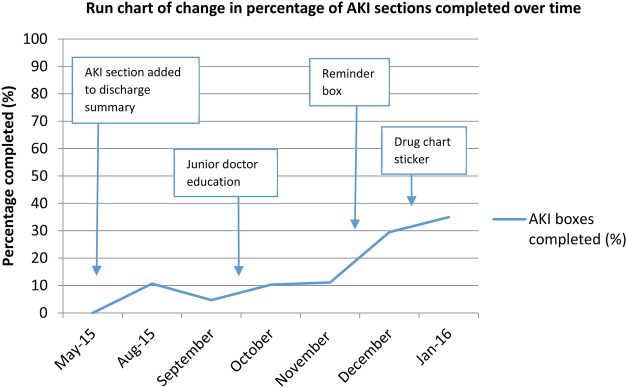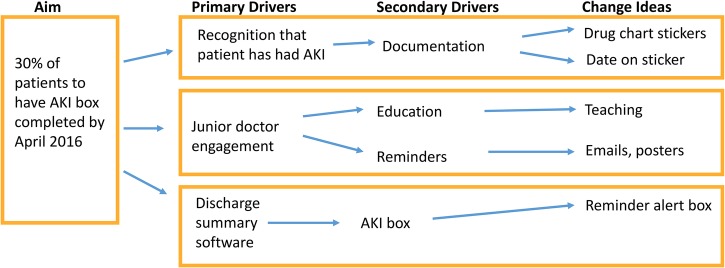Acute kidney injury; improving the communication from secondary to primary care.
BMJ quality improvement reports
Pub Date : 2017-06-23
eCollection Date: 2017-01-01
DOI:10.1136/bmjquality.u211147.w6661
引用次数: 1
Abstract
Acute kidney injury (AKI) is a common but preventable event in secondary care. It is known to be associated with poorer outcomes for the patient's future health. Patients therefore require specific after-care in the community following an AKI, both in the short and long term. However, information about an inpatient AKI is often not communicated to primary care at discharge. Only 11.0% of discharge summaries contained full information about an AKI (including stage of AKI, changes to medications and follow-up required) in August 2015. We aimed to improve communication about AKI on discharge summaries via implementation of a series of interventions between June 2015 and March 2016. A specific section was added to the discharge summary software to prompt inclusion of information regarding AKI. An automatic warning message was added later as an additional prompt. A programme of education was provided for the junior doctors. A ward-based campaign was rolled out using the animated character ‘Ned the Nephron,’ using posters, emails and screen savers. We also introduced an AKI warning sticker for drug charts, which reminds the discharging doctor that the patient has had an AKI during the admission. Our primary outcome was the percentage of discharge summaries that had the AKI section completed, as this contained all the desired information, including stage of AKI and frequency of follow up blood tests in primary care. Monthly data collections showed that this gradually increased from 4.7% in September 2015 to 35.0% in January 2016. We expect further increases with the recent introduction of the drug chart sticker.



急性肾损伤;改善从二级保健到初级保健的沟通。
急性肾损伤(AKI)是一种常见但可预防的二级保健事件。众所周知,这与患者未来的健康状况较差有关。因此,在AKI发生后,患者需要在社区中进行短期和长期的特殊护理。然而,住院患者的AKI信息通常不会在出院时告知初级保健。2015年8月,只有11.0%的出院总结包含AKI的完整信息(包括AKI的分期、药物的变化和所需的随访)。我们旨在通过2015年6月至2016年3月期间实施一系列干预措施,改善出院总结中AKI的沟通。在出院总结软件中增加了一个特定的部分,以提示有关AKI的信息。随后添加了一条自动警告消息作为附加提示。为初级医生提供了一个教育方案。该公司利用动画人物尼弗隆(Ned the Nephron),利用海报、电子邮件和屏幕保护程序,发起了一场基于ward的宣传活动。我们还在药物图表上引入了AKI警告标签,提醒出院医生患者在入院期间曾发生AKI。我们的主要结局是完成AKI部分的出院总结的百分比,因为这包含了所有所需的信息,包括AKI的阶段和在初级保健中随访血液检查的频率。月度数据收集显示,这一比例从2015年9月的4.7%逐渐上升至2016年1月的35.0%。我们预计,随着最近药物图表贴纸的引入,价格将进一步上涨。
本文章由计算机程序翻译,如有差异,请以英文原文为准。
求助全文
约1分钟内获得全文
求助全文

 求助内容:
求助内容: 应助结果提醒方式:
应助结果提醒方式:


